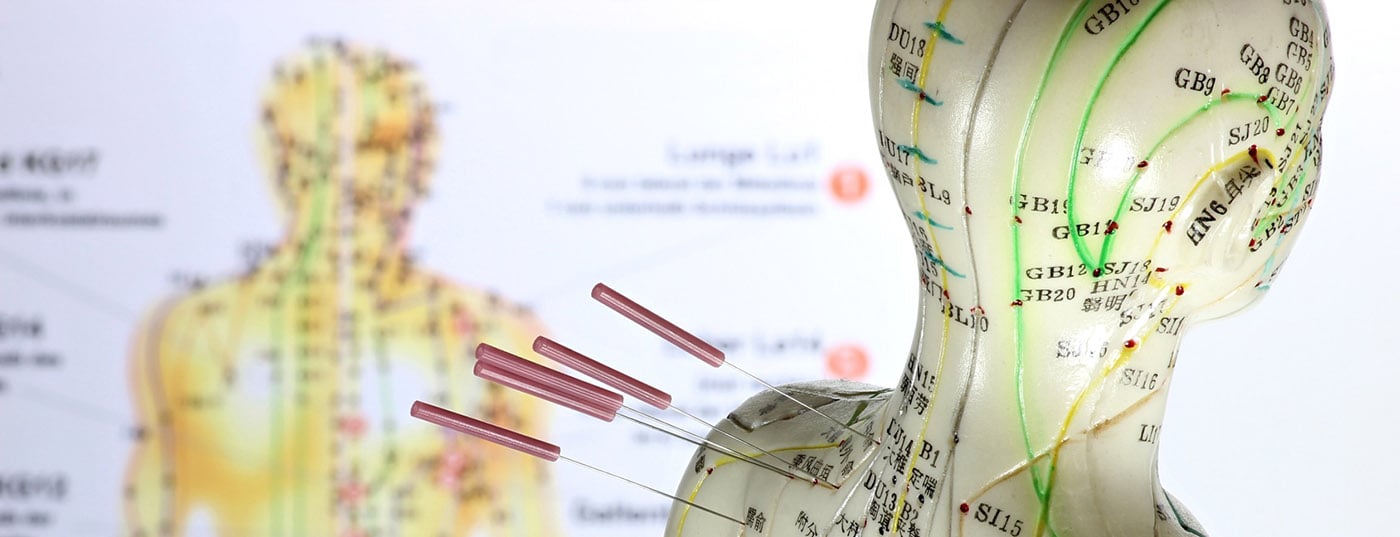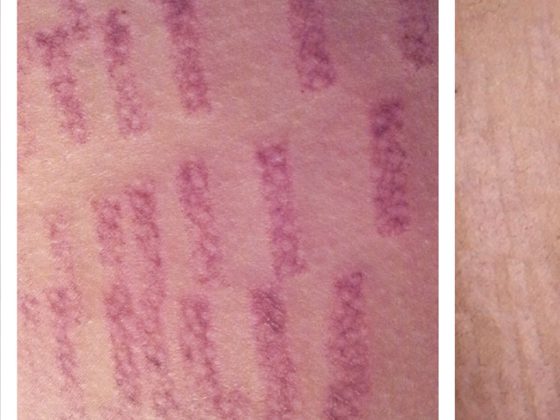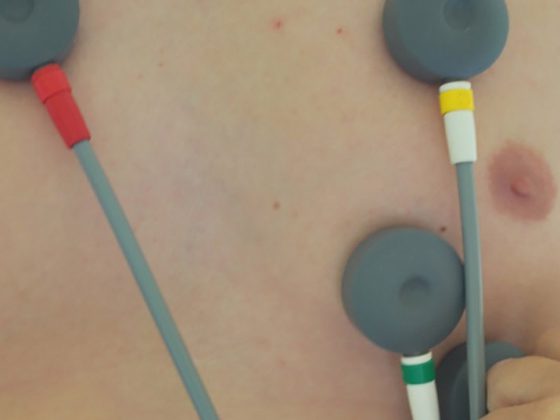The evidence for acupuncture for pain is broadly supported in meta-analyses. Integrative medicine, i.e. cooperation between complementary and conventional medicine, will be the model of the future. The WHO has published a scientifically supported list of indications for the use of acupuncture.
Complementary and alternative medicine (CAM) has become an integral part of the Swiss healthcare system. According to surveys, every second Swiss uses KAM methods. Chinese medicine in particular, especially acupuncture, is becoming increasingly popular.
Especially for chronic pain, the data or evidence for acupuncture is very good: meta-analyses with data from over 18,000 patients in a total of 29 studies show that acupuncture works significantly better than placebo, than “sham acupuncture” – and is also significantly more effective than standard medical therapy [1]. The results apply to pain conditions of migraine and headache, musculoskeletal pain, gonarthrosis and lumbalgia. Acupuncture is clearly superior to standard therapy for these clinical pictures, which are so common in practice – and this without the frequent and often serious side effects, especially with long-term use of NSAIDs.
Basics of TCM
Traditional Chinese medicine (TCM) looks at the human being in his being ill in a completely different way than our Western medicine: A central element in TCM is the “Qi”, with us most likely translated as “energy”. This life force Qi flows through the person in a constant flow and nourishes the organs, tendons and bones, the brain, etc.. The emotions are also dependent on a harmonious “Qi flow”. That is why in Chinese medicine there is no separation between body and mind, both belong together.
Qi is influenced by external pathogenic factors such as wind, heat and cold, but also by internal, psychological disorders, by excessive emotions such as anger, worry and stress. Everything is in a constant state of change: Just as day and night alternate, so do yin and yang, the complementary forces that are at work everywhere in nature, also in man. If a person is healthy, the Qi flows harmoniously and Yin and Yang are in a flowing balance. If this balance is disturbed by external or internal pathogenic factors, one becomes ill. Pain usually occurs when there is a stagnation of the free flow of qi or xue, the nourishing yin component, that is, the blood.
Influencing the Qi
The energy flow can be influenced by acupuncture: At special points on the meridians, the Qi is reached and brought back into balance. Special herbs, also categorized by their energetic properties, are used in Chinese medicinal therapy. Since Qi is significantly influenced by breathing and nutrition, regular exercise, including Qi Gong, “working with Qi”, or Taiji are helpful. Dietetics alone, a diet based on the “five phases of transformation”, can already balance an existing energetic imbalance or fill a relative void.
The teaching of Chinese medicine is based on the rules of Daoism, the ancient natural philosophy of China, which goes back to Lao Tzu. Everything is in a constant state of change – everything flows. A healthy life is led by those who follow the laws of nature and live in harmony. During and after the Cultural Revolution period in China, this philosophical and spiritual background was largely lost, and modern TCM was born as a standardized form of traditional Chinese medicine. However, modern TCM is better adapted to Western quality standards. Europeans and especially Americans are far ahead of the Chinese in scientific research of TCM in terms of methodology of their studies. There are now thousands of clinical studies worldwide on the effectiveness of acupuncture, Chinese medicinal therapy and Taiji.
Diagnosis
The energetic approach to the human being leads to a completely different diagnosis: In addition to the detailed anamnesis and questioning about the symptoms, important clues about the energetic state can be drawn from the image of the tongue and from the detailed palpation of the pulse. The pulse represents the energetics of the meridian and organ system. Thus, six pulse qualities can be palpated on each side, the yin and yang qualities as superficial and deeper representation of the meridians and transformation phases, respectively.
Acupuncture
In Europe and North America, acupuncture is practiced as the most common method of TCM. By means of needles, the Qi is reached and moved at the approximately 360 points on the meridians. Pathogenic energy is discharged, any imbalance is balanced. There are twelve main meridians and six extra meridians.
Auriculomedicine, ear acupuncture, a separate branch of acupuncture, which was developed by the French physician Dr. Nogier and the Munich physician Dr. Bahr, is also widespread and has now also found its way into China. Moxibustion, the burning of moxa herb (Artemisia vulgaris or mugwort herb), additionally moves the energy. Cupping and Gua Sha, a special connective tissue technique, help move stagnant Qi and Xue.
Arzneitherapy
Chinese medicinal therapy has been at the forefront in China since early times. In the classics are listed up to 10,000 recipes from about 2000 herbs. With a medicinal mixture of up to 15 different herbs, an energetically differentiated, individually composed formula is created. In addition to a variety of plants, few mineral and animal substances are also used. In the past, the mixture, which was adapted to the individual patient and his or her complaints, was boiled out at home with water as a decoction. Today, patient-friendly dosage forms are available in the form of granules, drops or tablets. The medicines act according to the energetic diagnosis, i.e. they warm, cool, make energy rise or sink, they fill up or drain. The drug therapy is usually very well tolerated and free of side effects. The quality of herbs is high in Switzerland. In our country, these medicines require a prescription – however, quality and purity cannot be guaranteed for remedies purchased on the Internet.
Personalized and integrative medicine
The future of medicine lies in “personalized medicine”, according to the SAMS [2]: “A truly personalized medicine implies not only the management of one’s own health, but also a change in our way of life and thus a redefinition of our society”. This paradigm shift is inherent in the understanding of Chinese medicine: each patient is considered individually in his or her being sick. A diagnosis of the energetic syndromes is made, and targeted treatment with acupuncture or Chinese medicinal therapy is given, along with explanations and recommendations for a healthy lifestyle as measures to help the patient keep himself in harmonious energetic balance. Prevention is therefore part of the success of the treatment.
Increasingly, integrative medicine is gaining in importance, the collaboration of complementary and conventional medicine in both outpatient and inpatient settings. With the knowledge of the treatment possibilities of both worlds, Chinese and Western medicine, the possibilities and strengths of both systems of thought can be optimally used for the benefit of the individual patient.
Indications for acupuncture
The WHO has published a list of indications for acupuncture [3]:
- Diseases of the musculoskeletal system respond very well to treatment with acupuncture, often in combination with Chinese medicinal therapy.
- For chronic diseases and for chronic pain, TCM can make an important contribution alone or in combination with conventional treatment methods.
- TCM is very effective for psychosomatic illnesses and mood or sleep disorders. By acting on the body through acupuncture, emotional and mental aspects are also treated, the patient is viewed and treated holistically.
- Cardiovascular diseases such as arrhythmias or functional heart diseases are successfully treated by acupuncture.
- Bronchopulmonary problems and allergies with rhinitis/asthma or conjunctivitis respond very well to acupuncture or Chinese medicinal therapy.
- Skin diseases such as urticaria, sun allergy, psoriasis, eczema and acne are successfully treated.
- Gynecological problems such as dysmenorrhea, cycle disorders and also infertility can be treated very effectively with acupuncture and/or Chinese medicinal therapy. Pregnancy problems such as nausea and vomiting are a classic indication, and prenatal care is also now standard in many hospitals.
- Migraine and headache as well as neurological diseases such as trigeminal neuralgia or polyneuropathy are indications for TCM.
- Gastrointestinal disorders: The problems of irritable colon or dyspeptic disorders incl. Ulcus ventriculi can be treated very well with acupuncture, as well as Crohn’s disease, ulcerative colitis, often in combination with the standard Western therapy, which can then be reduced accordingly or often omitted altogether.
- Carcinoma patients benefit in their quality of life from Chinese medicine. Side effects of radiation or chemotherapy are alleviated, and the body’s defenses are strengthened both physically and mentally.
Certificate of proficiency
Since 1999, the FMH has recognized the certificate of proficiency for physicians “Acupuncture – Chinese Medicinal Therapy – TCM (ASA)”. Switzerland has around 700 titleholders. Acupuncture and Chinese medicinal therapy are covered as medical services by basic insurance (www.akupunktur-tcm.ch).
In addition, there are the non-medical therapists who are united in the SBO-TCM Association. Since May 2015, the new title “Naturopath with Federal Diploma” is recognized. The services of the therapists are covered by the supplementary insurance (www.SBO-TCM.ch).
Literature:
- Vickers AJ, et al: Acupuncture for chronic pain: individual patient data meta-analysis. Arch Intern Med 2012; 172: 1444-1453.
- Bulletin SAMS 2012; 3.
- WHO: Acupuncture: review and analysis of reports on controlled clinical trials. WHO 2002. apps.who.int/medicinedocs/pdf/s4926e/s4926e.pdf.
HAUSARZT PRAXIS 2015; 10(8): 28-31











